Search
Search Results
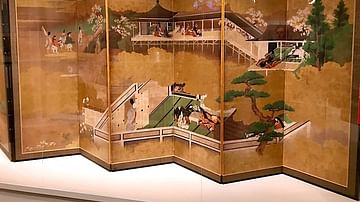
Image
A Japanese Folding Screen
A Japanese folding screen or byobu, used to sperate room space in traditional homes. This example shows a scene from the Tale of Genji. H. 153.4 cm x W. 349.9 cm. 18th century CE. (Asian Art Museum, San Francisco)
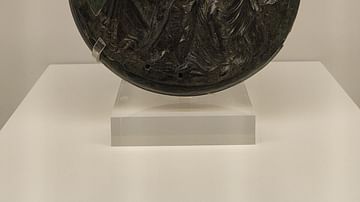
Image
Folding Mirror
The cover bears a relief representation of Dionysos flanked by two Maenads or Adonis flanked by Aphrodite and Persephone. The female figures wear silver jewellery. Folding mirrors consist of two two bronze discs connected by a hinge...
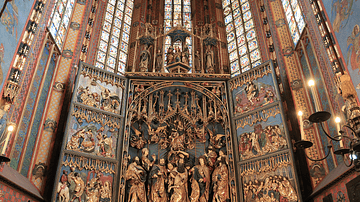
Article
Renaissance Altarpieces
During the Renaissance (1400-1600) just about any artist of worth found themselves commissioned at some point in their careers to produce an altarpiece. Some of the greatest names in European art were so called upon, from Jan van Eyck to...
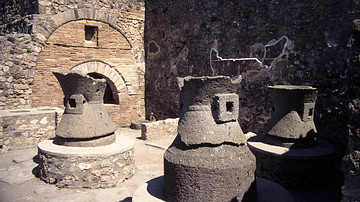
Article
Food in the Roman World
The ancient Mediterranean diet revolved around four staples, which, even today, continue to dominate restaurant menus and kitchen tables: cereals, vegetables, olive oil and wine. Seafood, cheese, eggs, meat and many types of fruit were also...
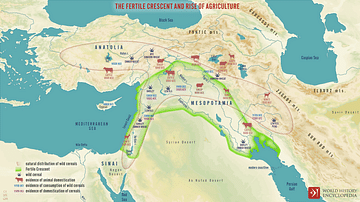
Article
Dynamics of the Neolithic Revolution
The Neolithic Revolution began between 10,000 and 12,000 years ago at several widely dispersed locations across the world, when our ancestors first began planting and raising crops. Agricultural communities sprang up almost simultaneously...

Article
The Nerge: Hunting in the Mongol Empire
The peoples of the Mongol Empire (1206-1368 CE) were nomadic, and they relied on hunting wild game as a valuable source of protein. The Asian steppe is a desolate, windy, and often bitterly cold environment, but for those Mongols with sufficient...
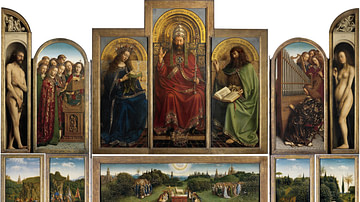
Definition
Ghent Altarpiece
The Ghent Altarpiece, otherwise known as The Adoration of the Mystic Lamb, is a painted panel altarpiece created in 1432 for the Vijd Chapel in the church of St. John the Baptist, now St. Bavo Cathedral in Ghent, Belgium. The work is credited...
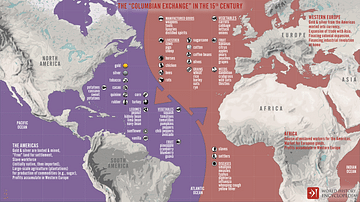
Definition
Columbian Exchange
The Columbian exchange is a term coined by Alfred Crosby Jr. in 1972 that is traditionally defined as the transfer of plants, animals, and diseases between the Old World of Europe and Africa and the New World of the Americas. The exchange...
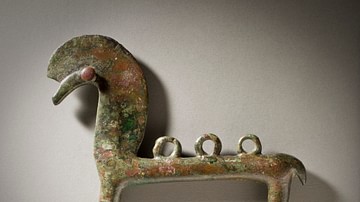
Definition
Villanovan Culture
The Villanovan culture flourished during the Iron Age in central Italy from c. 1000 to c. 750 BCE. It was a precursor of the Etruscan civilization, although the two populations are actually the same and the term Villanovan should not imply...
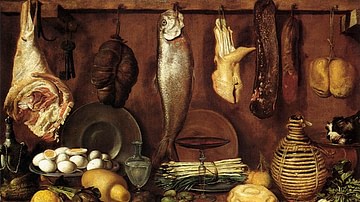
Article
Food & Drink in the Elizabethan Era
Food and drink in the Elizabethan era was remarkably diverse with much more meat and many more varieties of it being eaten by those who could afford it than is the case today. Storage of food was still a problem and so fresh produce was grown...